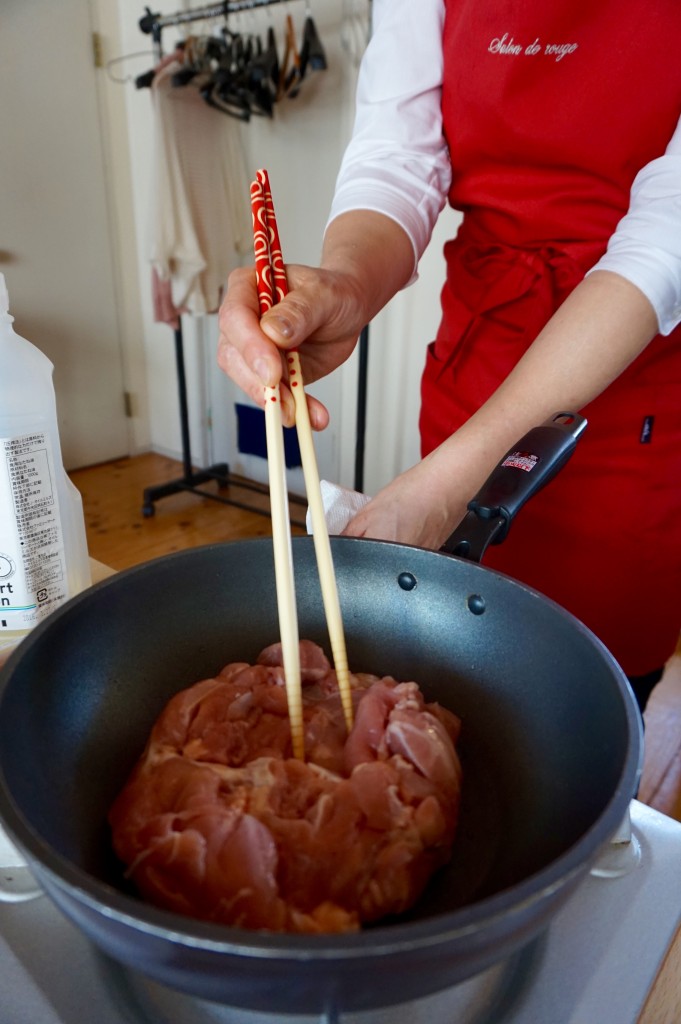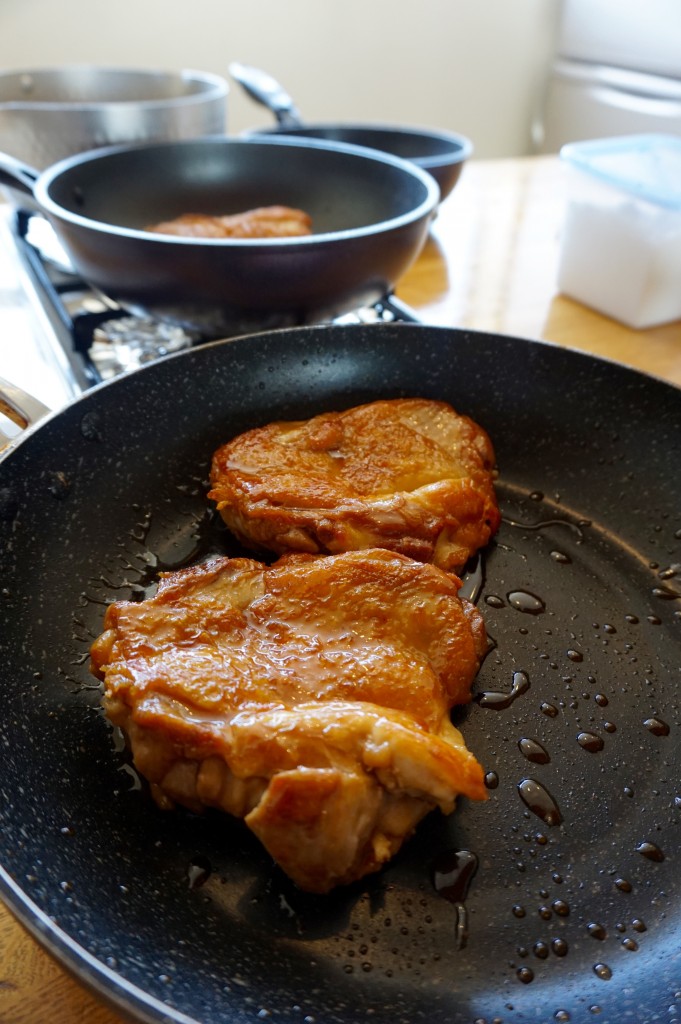Before I even recovered from my 12-hour time change, I headed to a Japanese Cooking Class on my first day in Tokyo (because that’s what I do when I first arrive in a new country). After an intense walk through the crowded Tsukiji Fish Market, where “tuna fish” is more of a prized commodity than food, I arrived at a small place than didn’t look like much of a cooking school from outside.
At Tsukiji Cooking School, everyone had to take their shoes off outside the door and put on slippers, as the local tradition dictates. There was a tiny kitchen where the chef and her two assistants were prepping our recipes. In the middle of the room was a dining table and chairs. We were given an apron, hand fan and printed recipes. Our instructor did not speak much English, but she had a translator.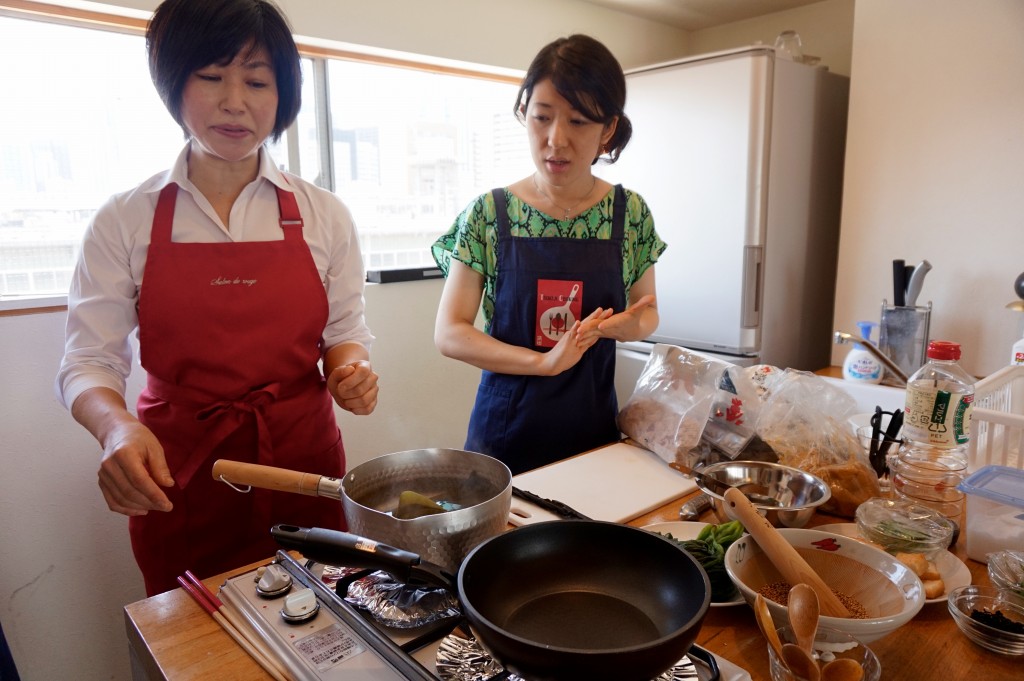
During the 2-hour class, we learned to make miso soup, chicken teriyaki, spinach salad and Okonomiyaki (Japanese pancakes) – all from scratch! Although I consider myself to be a savvy chef, there were things I had not known about, especially because I never cooked Japanese before.
This Miso soup had very strong flavors. We first made a broth using whole seaweed and dried fish skeletons.
We made a delicious dressing of freshly ground roasted red sesame seeds with soy sauce, dashi, and lots of sugar, to flavor local greens that tasted sort of like spinach but crispier.
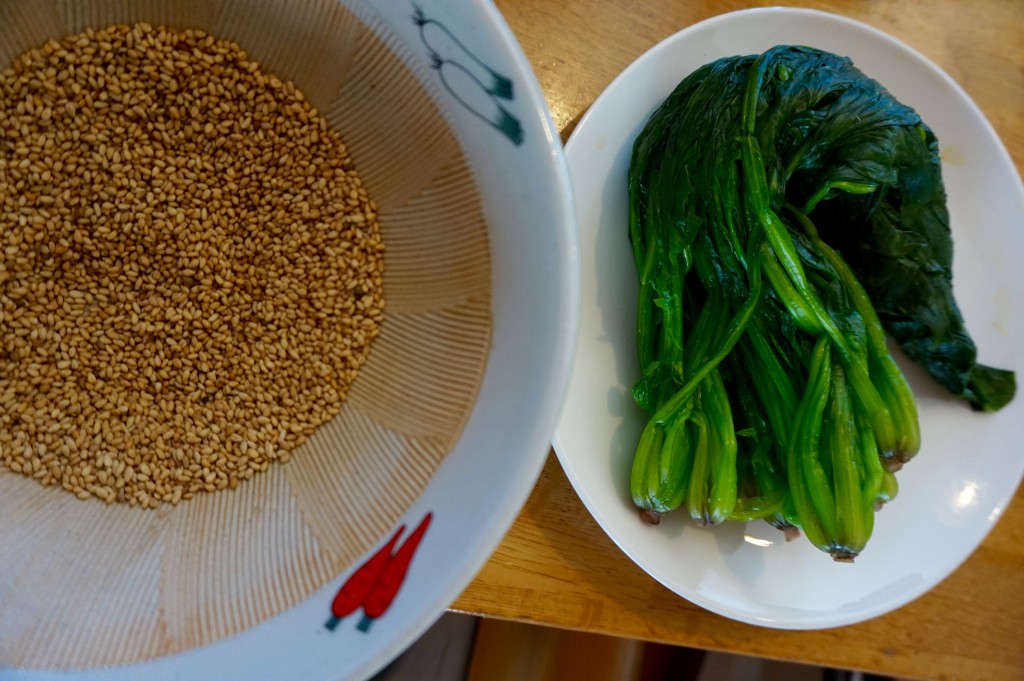
Okonomiyaki was fairly easy to prepare as most of the work involved only chopping. It is a savory dough full of vegetables, topped with sauce, mayo and seaweed. Apparently, there are parties around this dish where everyone sits around and grills their own pancakes.
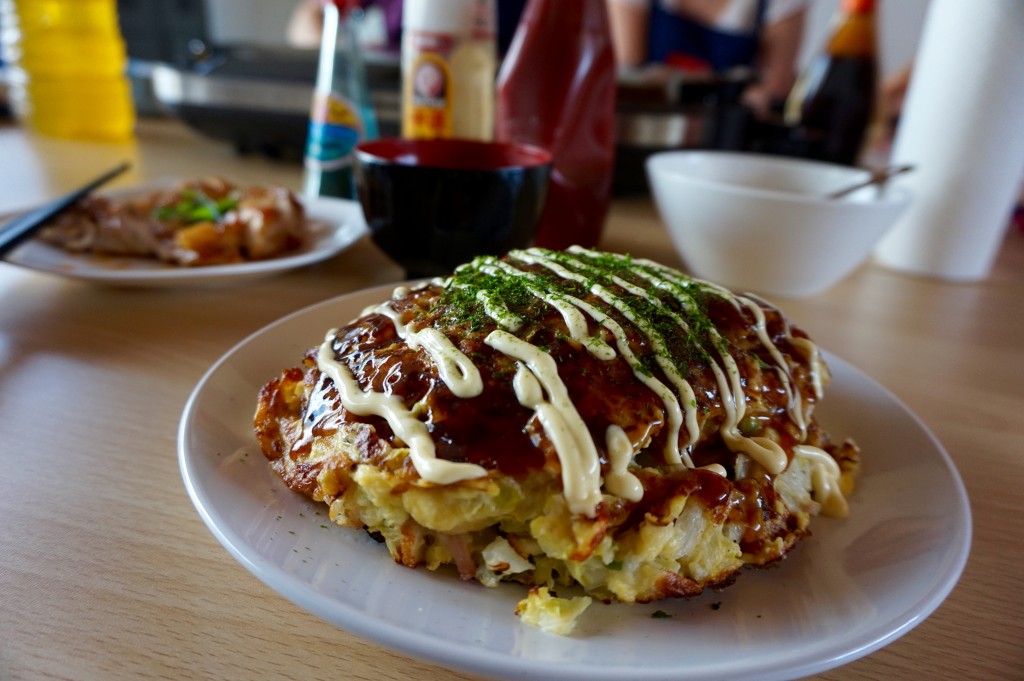
Here are a few things I learned about Japanese cooking –
- Japanese chefs cook with chopsticks. It was actually not that difficult and more practical, since the “spatula chopsticks” are much longer than the eating sort.
- There are different kinds of seaweed, each with its own purpose. Depending on the texture and flavor, some are better suited for dashi (broth), others for toppings.
- None of the recipes call for salt or pepper. In fact, there are no seasonings, spices or herbs added to the dishes we prepared.
- Soy and sugar always find their place in most dishes. Contrasting flavors add enough seasoning to satisfy Japanese palates.
- Teriyaki is a sauce added at the end, not a marinade. Common myth we have in the West since we tend to grill our meats.
- You taste food with your eyes first. I was fascinated by how much time and effort the chefs put into making each component on the plate look perfect. Presentation is definitely very important.
Chicken Teriyaki Recipe (authentic Japanese style)
